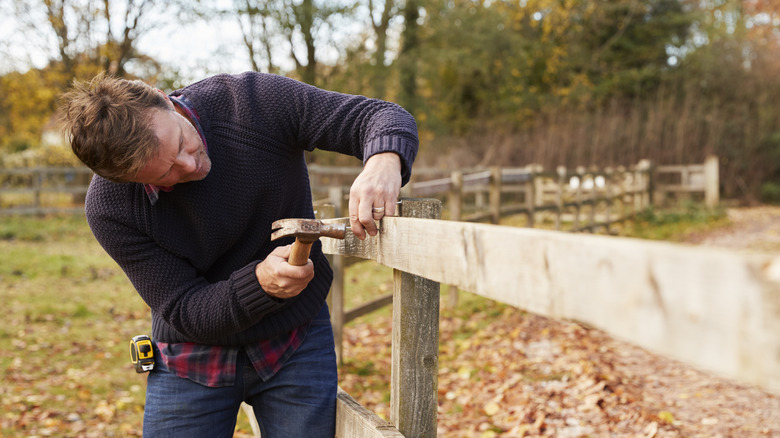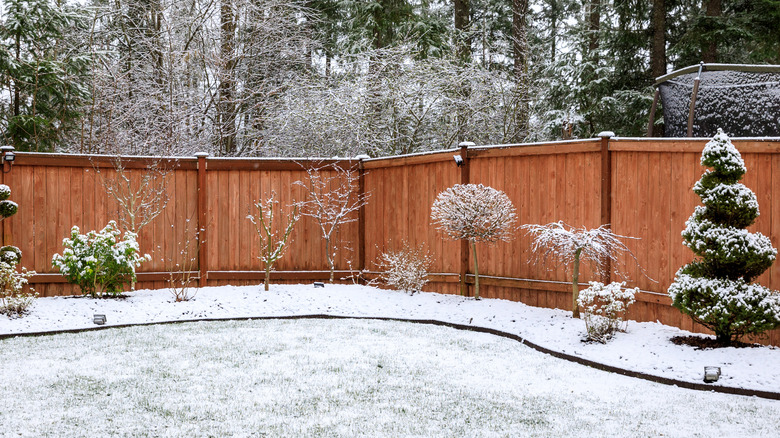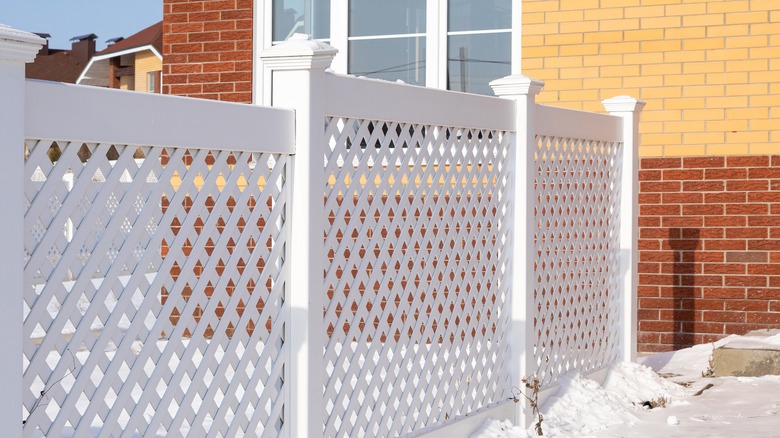Reasons Why You Should Install A Fence During The Winter
If you want to increase your home's privacy or make your yard safer for pet and kids, installing a fence is the way to go. When putting up a new fence, many homeowners gravitate towards installing it sometime in the spring or summer, but if you're looking to complete this renovation on a budget, consider installing your fence during winter instead. While there's some unique factors to be conscious of like working with frozen ground, installing a fence in cold weather is still doable. Plus, with winter projects, you have the bonus of catching contractors in their off-season. This means that contractors won't just have more time available, but they're also likely able to get materials faster due to less demand. This means that you can get your fence installed quicker than you would in spring or summer when you may have to wait for a contractor's availability to open up.
Fencing can be a costly endeavor. On average, homeowners spend $3,150 on fencing, with variations in cost depending on the material chosen, yard size, height, and other factors. However, in addition to faster installation, you may be able to get work done for less money in winter by negotiating. Since winter is often slow, your contractor may be more willing to adjust their price compared to peak seasons. But besides cashing in on the off-season, there are even more practical reasons why you should launch your fence project in winter.
Installing a fence in winter can be faster and more convenient
Generally, it takes around two to four days for a contractor to install a fence, depending on the size of your property. If you decide to take on the project by yourself, you may be looking at a week or more of hard work. Whether you hire a professional or DIY your fence, another good reason to install a fence in winter is the lack of greenery. Most grasses and shrubs will die back or go dormant in winter. Since there's less vegetation that needs to be trimmed or worked around, the installation process can be much more efficient.
Speaking of vegetation, a winter fence installation makes gardening and landscaping much easier. After all, most landscaping begins in the spring. By having your fence up before then, you'll be able to take it into account when planning out your future projects. Instead of trying to plan your fence at the same time as you're filling in the garden, you can focus on one task at a time and mold your landscaping to flatter the new fence. Similarly, during the time that your fence is under construction, you may not be able to use your yard much. This can be annoying if you want to enjoy your outdoor space during spring and summer, but in winter, you can get your fence installed without any major inconvenience to your family.
Winter conditions may impact which fence material is right for you
When putting up a new fence, one of the hardest things to do is choose a backyard fence material that fits your family's lifestyle, and winter could be a good time to assess which material is right for your climate and neighborhood. Some common options include galvanized steel or aluminum chain link, wood, and vinyl. The right choice will also depend on individual factors like budget and style, but if you're in an area with tough, icy winters, you must pick a cold-weather resistant material.
If your area experiences hard winter freezes, you may want to avoid wood, as the freeze-thaw cycle can cause it to crack. If you strongly desire a wood fence, at least consider using metal posts to provide a better foundation. However, open-style vinyl is a great option for cold climates, and it's easy to DIY a vinyl fence as long as you avoid these crucial mistakes. You can also look into composite fencing which is made from recycled plastics and hardwood. Because this material is incredibly durable and wind-resistant, you don't have to worry about leaving space in your fence for wind or snow to pass through. Finally, if you decide to DIY your fence installation, check out these tips for building the perfect fence such as familiarizing yourself with any city codes or ordinances, and ensuring that you know exactly where your property line is.


